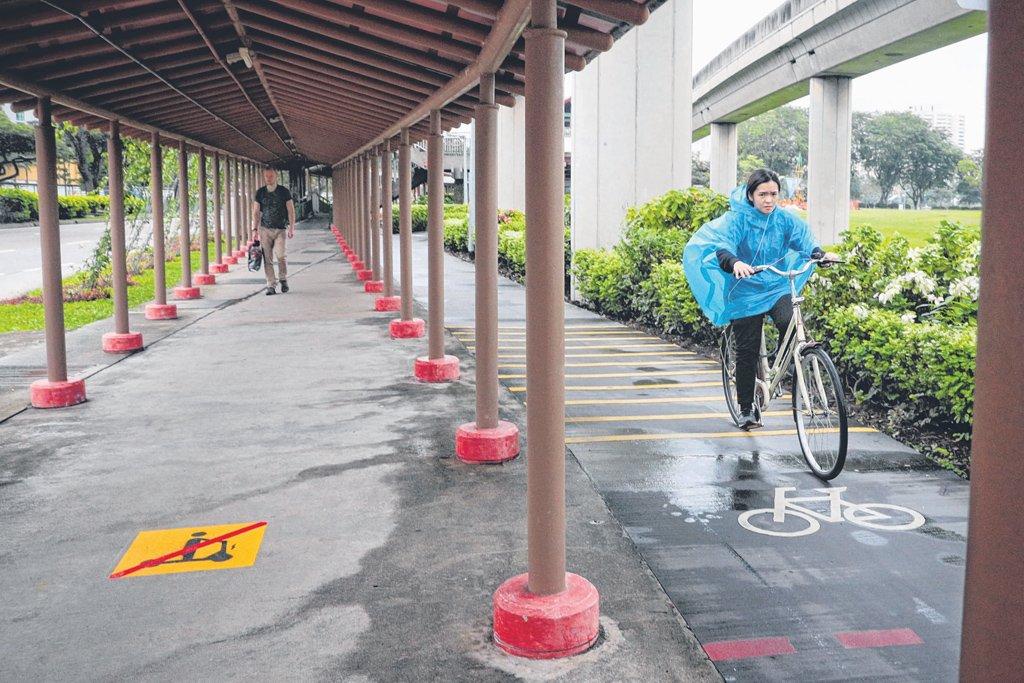Study shows more will commute by walking and cycling in 10 years
14 Feb 2020|1,122 views
Singapore will see a significant shift towards cycling and walking as a mode of transport in the next 10 years, when its population exceeds 6.3 million, said international research firm Kantar.

The firm told The Straits Times its forecast is based on a projected population of 6.34 million in 2030 - up from 5.7 million as of the end of last year - with "740,000 residents or 11.7% of the population changing the way they travel between now and 2030, with cycling and walking becoming the fastest-growing forms of transport".
Specifically, Kantar expects cycling as a mode to grow by 46% and walking by 24%. It said that although the percentage growth "seems big, it is based on a small absolute base". As of 2011, walking accounted for 4% of all commutes, while cycling was just 1%. Kantar stated that the share of car trips will increase by 2%, while public transport will shrink by 13%.
In Singapore, Kantar surveyed 750 people about their "current travel experiences... and the emotions they attach to each one". The findings were then presented to 53 of the world's leading mobility experts, asking them to interpret the results and predict their impact by 2030. Kantar added that its forecast for 2030 also uses mathematical models and considers other key variables to project how the urban mobility market will evolve.
Kantar's City Mobility Index, which assesses how easily and efficiently people can move around in a city based on availability and affordability of transport options, ranked Berlin, Auckland, Moscow, New York and Munich as the top five. Singapore was ranked 21.
Singapore University of Social Sciences Transport Economist Walter Theseira expressed scepticism about the report. "Singaporeans tend to live some distance from their workplace because our primary housing areas, HDB new towns, are geographically separated from the major employment areas, with the exception of regional hubs like Jurong," he said.
Prof Theseira added, "I don't understand why walking is projected to increase so much either. It is not a problem of infrastructure, for walking. It is a problem again of origin and destinations being too far apart to be comfortable or conducive to walking."
Based on the average public transport ridership of 7.6 million, he said he found it "hard to imagine" that some one million daily trips would be substitutable with walking and cycling with the current pattern of demand. "Yes, intra-town is substitutable, but not longer distance trips," he added.

"Between 2012 and 2016, the number of daily active mobility journeys rose from 2.2 million to 2.6 million," the master plan noted. The LTA is continuing with its plans to build more covered walkways, and expand the cycling path network.
Singapore will see a significant shift towards cycling and walking as a mode of transport in the next 10 years, when its population exceeds 6.3 million, said international research firm Kantar.

The firm told The Straits Times its forecast is based on a projected population of 6.34 million in 2030 - up from 5.7 million as of the end of last year - with "740,000 residents or 11.7% of the population changing the way they travel between now and 2030, with cycling and walking becoming the fastest-growing forms of transport".
Specifically, Kantar expects cycling as a mode to grow by 46% and walking by 24%. It said that although the percentage growth "seems big, it is based on a small absolute base". As of 2011, walking accounted for 4% of all commutes, while cycling was just 1%. Kantar stated that the share of car trips will increase by 2%, while public transport will shrink by 13%.
In Singapore, Kantar surveyed 750 people about their "current travel experiences... and the emotions they attach to each one". The findings were then presented to 53 of the world's leading mobility experts, asking them to interpret the results and predict their impact by 2030. Kantar added that its forecast for 2030 also uses mathematical models and considers other key variables to project how the urban mobility market will evolve.
Kantar's City Mobility Index, which assesses how easily and efficiently people can move around in a city based on availability and affordability of transport options, ranked Berlin, Auckland, Moscow, New York and Munich as the top five. Singapore was ranked 21.
Singapore University of Social Sciences Transport Economist Walter Theseira expressed scepticism about the report. "Singaporeans tend to live some distance from their workplace because our primary housing areas, HDB new towns, are geographically separated from the major employment areas, with the exception of regional hubs like Jurong," he said.
Prof Theseira added, "I don't understand why walking is projected to increase so much either. It is not a problem of infrastructure, for walking. It is a problem again of origin and destinations being too far apart to be comfortable or conducive to walking."
Based on the average public transport ridership of 7.6 million, he said he found it "hard to imagine" that some one million daily trips would be substitutable with walking and cycling with the current pattern of demand. "Yes, intra-town is substitutable, but not longer distance trips," he added.

"Between 2012 and 2016, the number of daily active mobility journeys rose from 2.2 million to 2.6 million," the master plan noted. The LTA is continuing with its plans to build more covered walkways, and expand the cycling path network.
Latest COE Prices
September 2025 | 1st BIDDING
NEXT TENDER: 17 Sep 2025
CAT A$107,889
CAT B$127,501
CAT C$71,556
CAT E$127,901
View Full Results Thank You For Your Subscription.





















